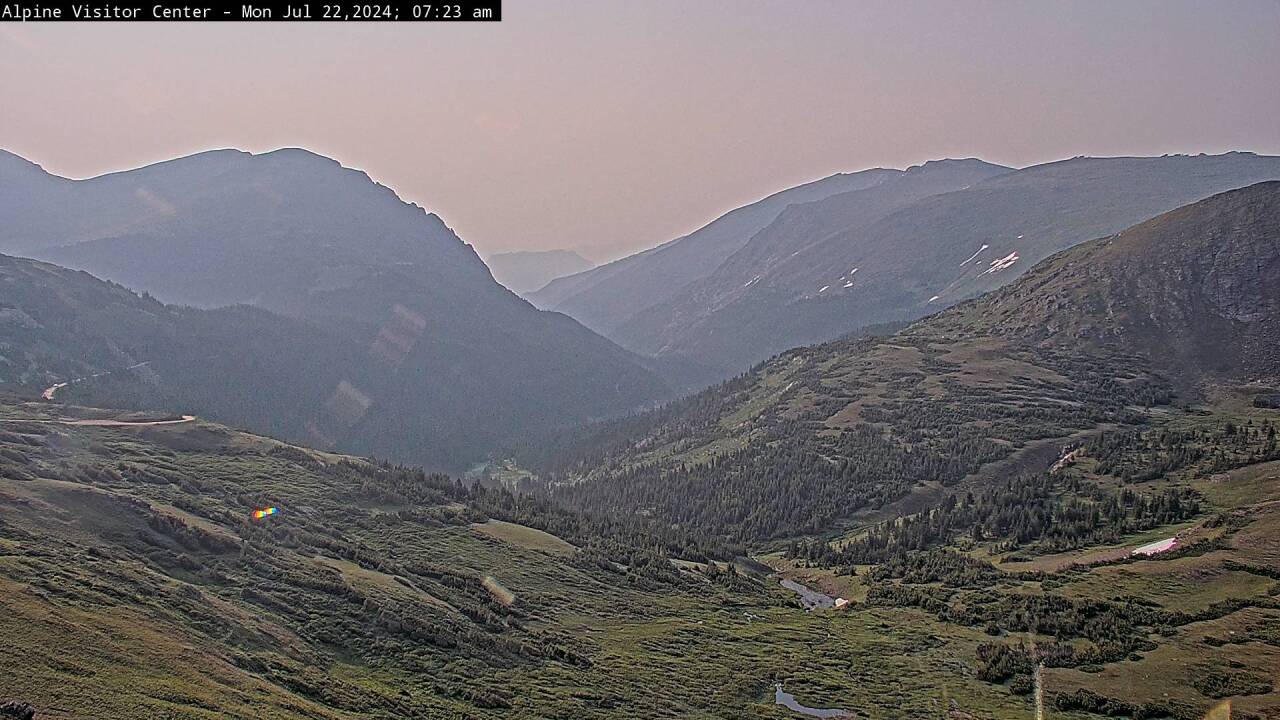DENVER — Tuesday marked the second day of lingering haze along the Denver skyline due to wildfire smoke drifting down from Canada and the Pacific Northwest.
The Colorado Department of Public Health and Environment (CDPHE) implemented an Ozone Action Day until Wednesday at 4 p.m. Denver ranked among the 20 most polluted major cities globally on Tuesday — the only U.S. city in that category, according to IQAir.
Scott Landes, supervisor of meteorology and the prescribed fire unit at Colorado's Air Pollution Control Division, said the majority of the smoke is coming from Canadian wildfires.
“Particulate pollution is emitted directly into the atmosphere, like in wildfire smoke," Landes explained. "Ozone is not emitted directly into the atmosphere. It's created through a very complex combination of atmospheric chemistry.”
Landes said ozone tends to thrive in hot and dry conditions, like those seen during Colorado summers. He said wildfire smoke can enhance ozone production at times.
“Our region also works against us. We have the Palmer Divide to our south. We have the foothills to our west. And that kind of acts like a bowl sometimes and all the pollutants kind of get stagnated in that bowl," Landes said. “I think we're going to see the hazy conditions, the high ozone, the high particulates, through probably Wednesday, at least. That kind of conveyor belt of wildfire smoke that's coming down from Canada, it's going to start getting cut off as we go into late Wednesday and Thursday. So I don't think we're going to see a real dramatic clean out.”

Denver7 | Weather
High ozone levels, wildfire smoke will continue to impact Colorado this week
Dr. Anthony Gerber, director of pulmonary research at National Jewish Health, said both particle pollution and ozone can have negative impacts on health.
“There's the short and long-term effects on certainly the most vulnerable people. So people with lung disease, the very young, or the very elderly are just at higher risk from sort of the same level of pollution," said Gerber. “If this sticks around for a month, then we start to worry more about sort of bigger swaths of the population maybe being affected, maybe having some long-term increased risk of developing lung disease or developing heart disease or things like that.”
Gerber said there's evidence that indicates long-term exposure to elevated levels of particulates can cause lung disease, heart disease, stroke, and even dementia.
“For someone who has cardiovascular disease, your risk kicks up in these days. But if you're outside exercising, I think that common sense, that it just feels worse and different than on a normal day, that's your body's cue to slow down or to stop. And so, you know, maybe go slower than usual, maybe cut your exercise down from 40 minutes to 20 minutes or from a run to a walk," Gerber said. “It's a little bit of a hidden problem, right? Because no one shows up at the emergency room with a heart attack and says, you know, 'Hey, doc, I think that that pollution caused this.'”
Gerber said vulnerable populations should try to limit their time outdoors when air quality is unhealthy.
"If you are really susceptible, the place to put the filter is your bedroom. Because we spend over half of our time in our house, in our bedroom. So if you get a HEPA filter, it can be very effective in bringing down your levels of pollution," Gerber said.
Particulates can creep into homes through open windows, Gerber said, meaning it's best to keep windows closed on days like Tuesday. However, that's not always a practical solution for households without air conditioning.
With two boys under 10 years old, Harmony Cummings likes to capitalize on every opportunity to get outside. However, the haze on Tuesday kept the family indoors.
“It's sad that we're living in a world where it is safer for our children to play inside on video games and screens than to go outside playing on our summer days," Cummings said. “It's why we're in Colorado is to be outside. But it's depressing to be outside. It makes me sad. It makes me sad for the future. If we don't make some major changes, things are only going to get worse.”
The Colorado from the American Lung Association graded 20 of 64 counties for at least one measure of air quality. Denver7 created a map based on the grades for the counties with high ozone day data. The majority of counties with available data received an F.

The American Lung Association's "State of the Air" report also found three Colorado cities (Denver, Fort Collins, and Colorado Springs) ranked among the 25 worst cities in the nation for ozone pollution.
To track air quality in Colorado, individuals can sign up for email alerts through CDPHE. There's also a new feature called the Colorado Smoke Blog that is updated several times a day at this time of year.





Denver7 is committed to making a difference in our community by standing up for what's right, listening, lending a helping hand and following through on promises. See that work in action, in the videos above.






